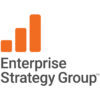 “Timing is everything, in life and in golf… and in providing your customers with an ESG Validation” – Arnold Palmer (mostly)
“Timing is everything, in life and in golf… and in providing your customers with an ESG Validation” – Arnold Palmer (mostly)
Promoting the right marketing content at the right time can have a positive impact on generating awareness, increasing sales opportunities, and improving your ability to close deals. When it comes to ESG validations, both technical and economic, we recommend promoting these middle-of-funnel assets at different points in a product’s lifecycle. Here’s what you need to know:
Technical validations dive into the top three ways that a solution brings value to organizations and help to differentiate the solution from others in the market. Integrating ESG research and our unique view of the industry, technical validations help to tell the complete story of a solution’s value, and do so from an independent, third-party perspective. These marketing assets are most useful around the time of a product or feature launch, as they help bring color to the impact that the solution will have on potential customers or users. They bridge the gap between technical and business decision makers by highlighting what customers should expect when implementing the solution and explaining why it matters to the business. Technical validations are imperative in organizations’ strategies when aiming to convert customers from inquisitive prospects into serious buyers.
“With Technical Validations, ESG can clearly articulate the real and tangible business value your product or solution brings to your customers. Our team’s diverse backgrounds, with decades of experience as IT practitioners, managers, and entrepreneurs—combined with our unique market insights gleaned from ESG’s world-class, demand-side research—helps us tell your story in a way that resonates with your customers and gives them the information they need to understand why your solution should matter to them.” – Tony Palmer, Principal Technical Validation Analyst, ESG
Economic value validations (EVVs) are equally valuable assets that are more impactful later in a product’s lifecycle. Where a technical validation is most useful around a product launch, an EVV is most valuable to an organization when the solution has been available for several months, allowing the product the required time to show its value through proven customer success stories. The reason for this is that EVVs validate the financial value of a solution based on proven customer use. Customer testimonials, interviews, and case studies are an integral component of EVVs, so the solution should be established before an organization can realize the true value of an EVV.
“An economic validation allows ESG to help quantify the value that your customers have seen through the use of the product. By talking to your customers, we create credible and quantified examples of where potential customers might see savings and benefits by using your product—especially those that are otherwise difficult to convey. I am amazed at how often we (ESG), and the vendors, learn something new about how a product designed to solve a technical problem has had a positive impact on seemingly unrelated processes and aspects of the business.” – Aviv Kaufmann, Principal Economic Validation Analyst, ESG
ESG validations, both technical and economic, provide an opportunity for organizations to highlight the true value of a solution. An independent, third-party perspective can give prospective customers confidence that they are purchasing a solution that will take their organization to the next level in IT. And by promoting both of these third-party validations at the recommended phase of a product’s lifecycle, organizations can maximize their investment and see an impact on sales.





